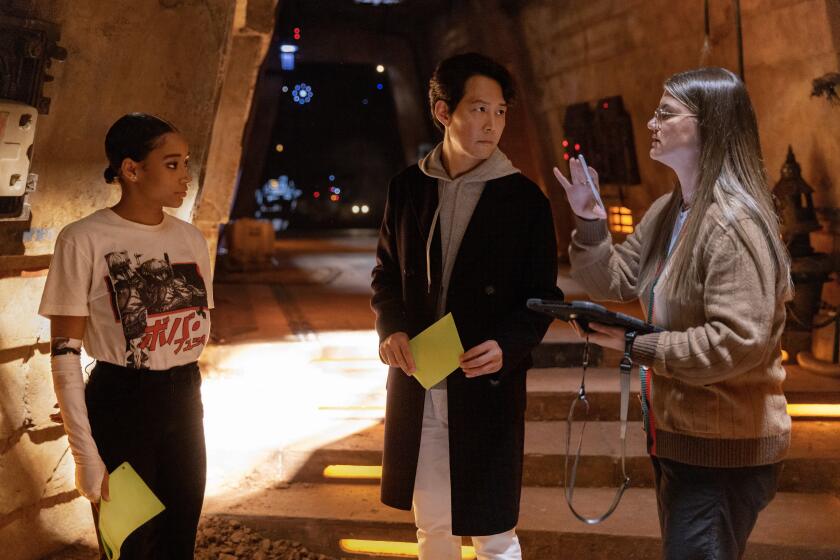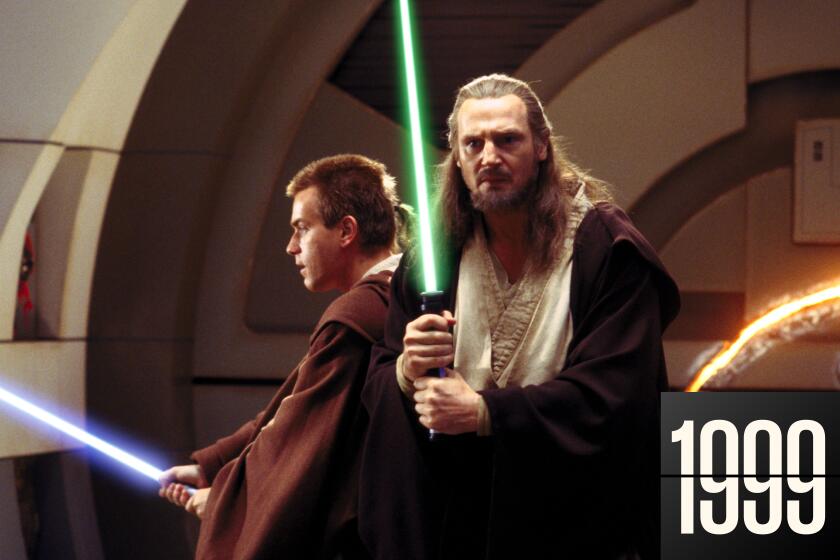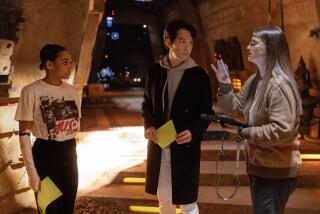‘The Acolyte’ broke new ground. Why its cancellation is bad news for the future of ‘Star Wars’
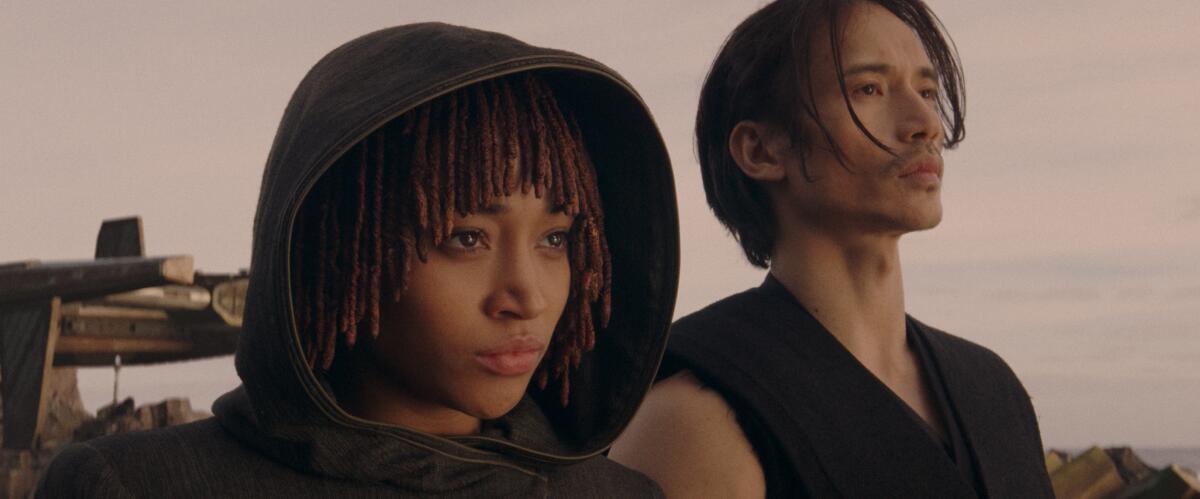
- Share via
“The Acolyte” was among “Star Wars’” most ambitious on-screen stories.
The Disney+ series was set during an era even “longer ago” in a galaxy far, far away that had yet to be explored in live action. A crime thriller that portrayed the Jedi in a new light, it introduced characters and lore that challenged preconceptions about the Force and its users. The show even teased a connection to a legendary dark side figure who had never previously appeared in film or television. And its first season, which concluded in July, ended on a cliffhanger.
Unfortunately, Lucasfilm will not be moving forward with “The Acolyte” Season 2, The Times has confirmed. The cancellation — though not quite unexpected — is still a blow for “Star Wars” that dampens hopes for the franchise’s future.
Amandla Stenberg talks about playing twins Mae and Osha in Disney+’s “Star Wars” series that’s set in the High Republic era, alongside Lee Jung-jae, who stars as Master Sol.
Created by Leslye Headland, “The Acolyte” followed Osha and Mae Aniseya, twins (both played by Amandla Stenberg) with a mysterious connection to the Force and a complicated history with the Jedi. It’s set roughly 100 years before the events of “Star Wars: Episode I — The Phantom Menace” (1999) during the waning days of the High Republic era.
The show was the first live-action “Star Wars” project to take place during a completely different time period than the core film series known as the Skywalker Saga (“Episode I” through “IX”). Series like “The Mandalorian” and “Ahsoka” are set between the events of the original and sequel trilogies, while “Andor” and “Obi-Wan Kenobi” take place between the events of the prequel and original trilogies.
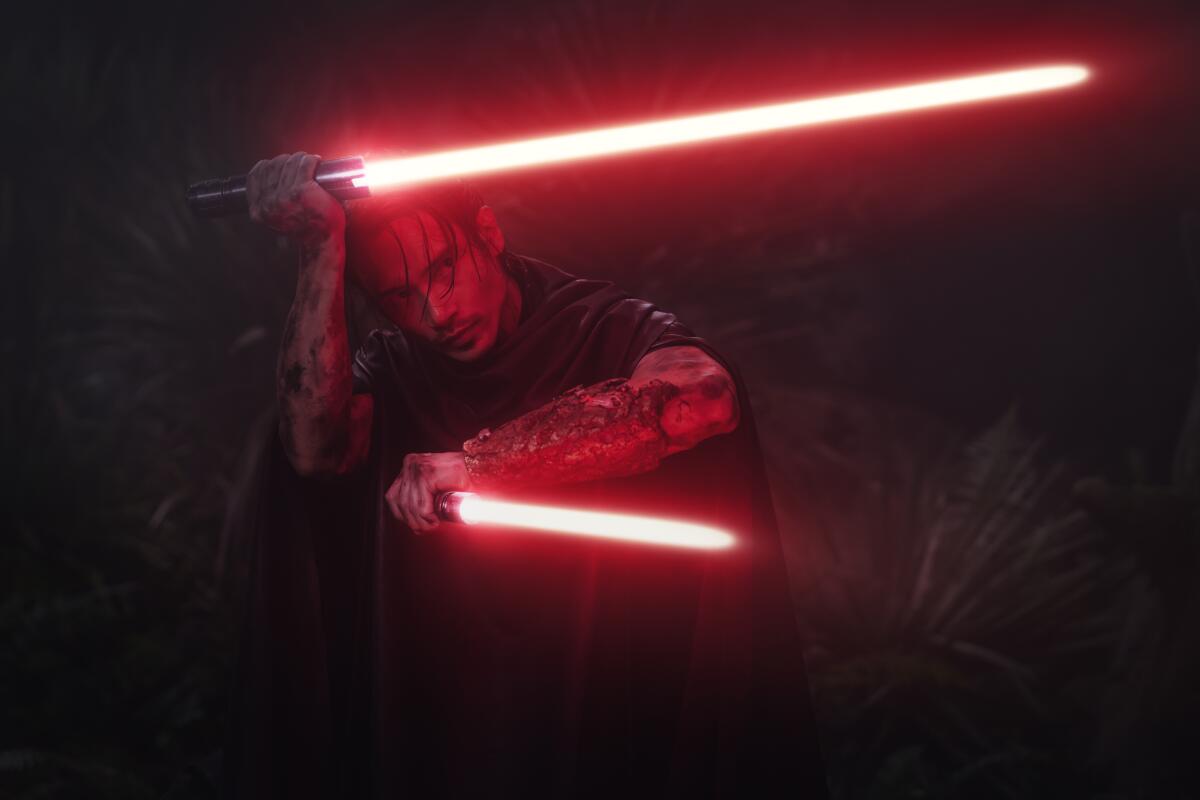
As much as Lucasfilm seems to have mastered the art of finding pockets within the main film series to tell additional stories, the future of the franchise seems increasingly limited if it is confined to merely mining this familiar (and finite) territory. “The Acolyte” broke new ground, spotlighting a time period that has primarily been built out in “Star Wars” novels and comics over the last few years.
And while it may not have been perfect, the series also infused “Star Wars” with new ideas, introducing a sect of Force users as well as different perspectives and nuance around the Jedi, who are not as infallible as fans want to believe. It also offered a glimpse of a galaxy that is unapologetically diverse and inclusive, with room for non-human Jedi and lesbian space witches alike.
In some ways, it feels like “The Acolyte” was doomed from the start. There has long been a dark side to the “Star Wars” fandom that is vocal in its vitriol toward perceived shortcomings — just look at how “The Phantom Menace” was received when it first premiered.
“The Mandalorian,” “Ahsoka” and 25 years of spinoffs show the stealth power of George Lucas’ 1999 prequel, which, for all its controversy, laid the groundwork.
Since then, “Star Wars” has become a sort of battlefront in the culture wars where self-proclaimed “superfans” feel emboldened to make racist and sexist remarks veiled as criticism. At times, their campaigns against certain “Star Wars” installments begin even before a trailer is released, so a series like “The Acolyte,” created by a woman and starring actors of color, was already facing an uphill battle in certain online spaces.
And even if the problematic backlash did not directly lead to “The Acolyte’s” cancellation, the news has been met with cheers by the “anti-woke” crowd, including the owner of a certain social media site formerly known as Twitter who is currently funding at least one lawsuit against Disney.
“The Acolyte” received generally positive reviews from critics and debuted to strong ratings that reportedly dropped in later weeks.
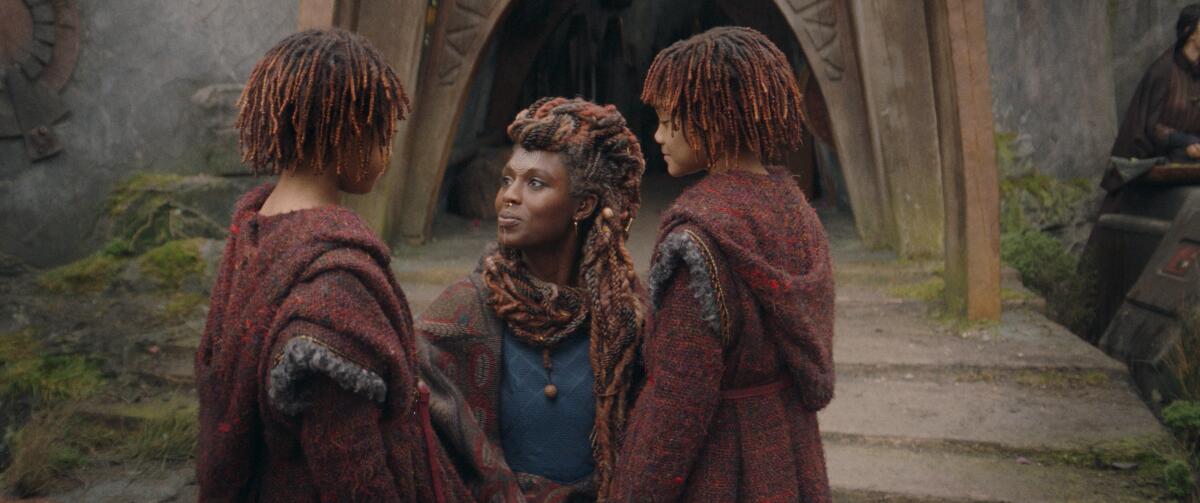
Some shows need time to work out kinks and to grow a following, which is difficult in the current crowded media landscape. In addition to there being little room left for nuanced discussion in public forums, TV shows also have shorter runways to be considered a success. Prestige sci-fi and fantasy series are costly and take time, resulting in a longer gap between shorter seasons — which makes building a fanbase that much more difficult.
Not every series can be “The Mandalorian” or “Andor” — instant hits with audiences willing to wait years for follow-up installments. “The Mandalorian” has expertly wielded nostalgia and Baby Yoda since its 2019 launch, while “Andor” has leaned into “Star Wars’” political roots. But, for now, Lucasfilm seems to be betting its future on those two properties: “The Mandalorian & Grogu,” a film that picks up after the events of “The Mandalorian” Season 4, and “Andor” Season 2 are among the few “Star Wars” projects with expected release dates in 2026 and 2025, respectively. Plus another series, “Skeleton Crew,” slated for December, shares some creative DNA with “The Mandalorian.”
However, Lucasfilm has signaled it understands that “Star Wars” needs to grow beyond “The Mandalorian” and “Andor” and the roughly 70 years that span the Skywalker Saga. The publishing initiative around the High Republic is meant to open the galaxy to more potential stories. And other announced films like the untitled Sharmeen Obaid-Chinoy-directed movie starring Daisy Ridley about the future of the Jedi Order and a James Mangold pic about the origins of the Jedi Order show there will be more onscreen efforts to explore “Star Wars’” past and future.
But “Star Wars” can’t wait too long to take more big swings like “The Acolyte” because the well of nostalgia is only so deep.
